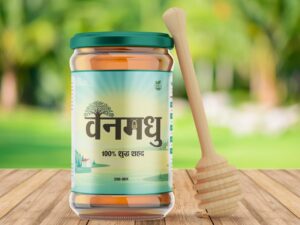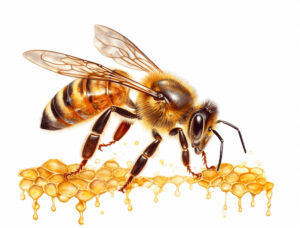When it comes to honey, not all jars are created equal. If you’ve ever stood in the grocery aisle wondering whether to go for the golden syrup in a bear-shaped bottle or a cloudy jar labeled “raw honey,” you’re not alone.
Let’s break down the key differences between raw honey and processed (commercial) honey, so you can make an informed and healthier choice.
What Is Raw Honey?
Raw honey is honey that comes straight from the beehive. It’s extracted and lightly filtered to remove impurities like wax or bee parts but is not heated or pasteurized. As a result, it retains all the natural enzymes, vitamins, minerals, and antioxidants that honey is known for.
Characteristics of Raw Honey:
- Cloudy or opaque appearance
- May crystallize over time (a natural process)
- Contains pollen, propolis, and enzymes
- Usually sold by local beekeepers or natural health stores
What Is Processed Honey?
Processed honey—also called pasteurized honey—is heated and filtered on a larger scale to improve its appearance and shelf life. This process often removes the beneficial nutrients found in raw honey and may even involve adding sugars or syrups.
Characteristics of Processed Honey:
- Clear, smooth texture
- Longer shelf life, less prone to crystallization
- Often found in supermarkets
- May contain additives or lack real honey altogether in some cases
Raw Honey vs. Processed Honey: Key Differences
| Feature | Raw Honey | Processed Honey |
|---|---|---|
| Processing | Minimal; unheated | Heated & heavily filtered |
| Nutrient Content | High (enzymes, antioxidants, vitamins) | Lower due to heat exposure |
| Pollen Content | Present | Removed |
| Taste & Aroma | Rich, varies by floral source | More uniform, mild |
| Crystallization | Natural and common | Slower or prevented |
| Shelf Life | Shorter (but still long) | Extended |
| Health Benefits | Immune-boosting, antibacterial | Reduced health properties |
Why the Difference Matters
✅ Health Benefits:
Raw honey offers significantly more health benefits thanks to its high content of antioxidants, antibacterial compounds, and nutrients. It supports immunity, digestion, skin health, and more.
✅ Natural Allergy Relief:
Raw honey contains local pollen, which may help desensitize seasonal allergy sufferers. Processed honey lacks this benefit since the pollen is filtered out.
✅ Authenticity:
Processed honey can sometimes be diluted or blended with corn syrup or sugar syrups. With raw honey—especially from trusted local sources—you know exactly what you’re getting.
How to Identify Real Raw Honey
- Look for terms like “unfiltered,” “unpasteurized,” or “raw” on the label
- Raw honey often crystallizes over time (a good sign!)
- Buy from local farmers’ markets, beekeepers, or trusted brands
Which One Should You Choose?
If you’re looking for maximum health benefits, natural healing, and a closer connection to nature, raw honey is the clear winner. While processed honey may look cleaner and stay liquid longer, it lacks the powerful nutrients and authenticity that raw honey delivers.
Final Thoughts
The next time you’re choosing honey, skip the flashy squeeze bottle and reach for the jar of raw, golden goodness. Your body—and taste buds—will thank you.
Ready to experience the difference?
Browse our collection of locally sourced, nutrient-rich raw honey today.




